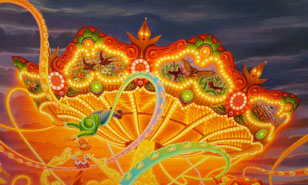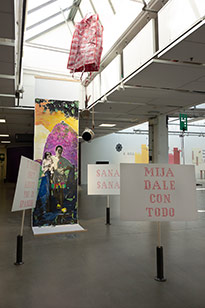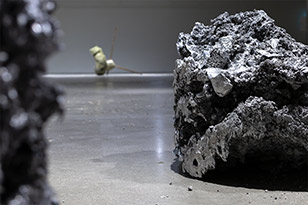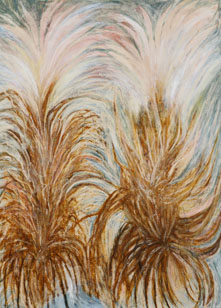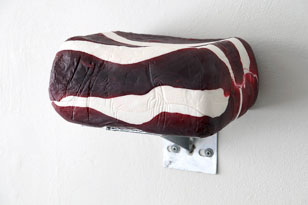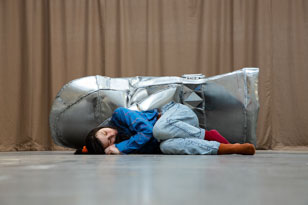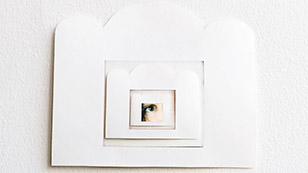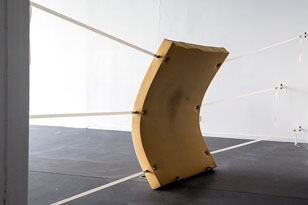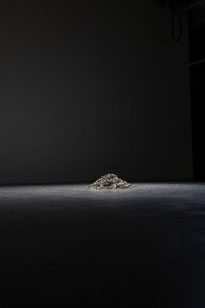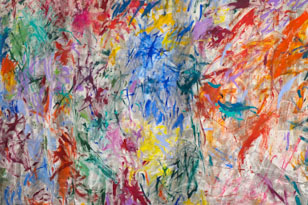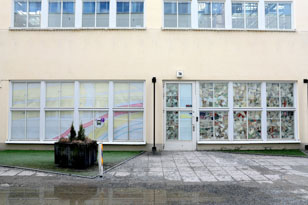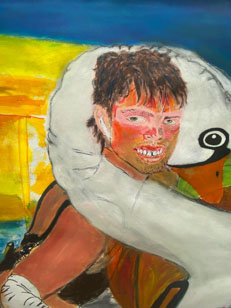Fine Art
In, and out of, context
So, how can we regard the first Master’s in Fine Art class that wasn’t at Konstfack during the COVID years? Is there a different openness and a different willingness to take on the world? A desire to stand up and be seen? If the observer wants to, there is a lot here to look at, literally. The presence of objects and spaces to interact with, large and physical sculptures to relate to, participant-based performance, personal narratives and experiences in photography, film and painting. Works that are constantly aware of and take into calculation that the recipient is on site and encountering the works. As well as an awareness of where this place is and who has chosen it.
But we also must not forget that all of these students spent two years with restrictions before they were admitted and are of course affected by this experience.
For those of us who have been supervisors for this class, the situation has been completely different than that of the years with restrictions. We have had close and intensive contact with the students and been there when the works were placed out into the world. We have been able to discuss the students’ work and been able to analyse and test how their artworks should be presented and installed. Voices and experiences have been formed and given shape.
Perhaps it is precisely these personal experiences that the students have brought, that we now see meeting a greater audience? Stories that have been formed in a limited world with restrictions, but which were then given an opportunity to be developed and which are now being presented without safety nets and reservations.
Many of our conversations with the students have been about how their works encounter an audience. The context for art is specific. Which should not be understood as always being the same or limited to a white or black cube. It can instead arise anywhere and in any context, as long as the artist is given an opportunity to define it. It exists where the artist decides that it should be and if this is forced upon the artist, there is a risk that the work could be misunderstood or misinterpreted. The work could be understood in a way for which it was not intended. If this happens, the artist needs to create the context for their work on their own. The artist writes their work into a context, and it is this context that is specific to the art and what makes it possible to understand the art and experience it.
The contexts, the places and the conversations for art can move between the established and the unknown. For the artist, it is always a challenge to relate to a context. A challenge that can also include the possibility of saying no and preferring to abstain. If we want to let the concept of art be free and a place that doesn’t let itself be easily defined, such a possibility should be understood as an active and powerful act.
Thomas Elovsson
Professor in Fine Art
